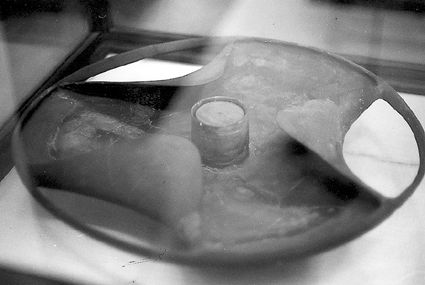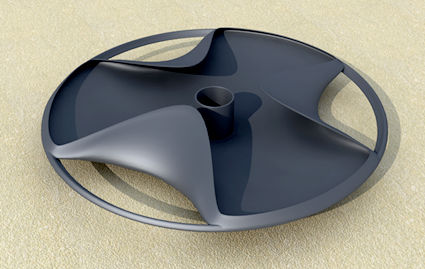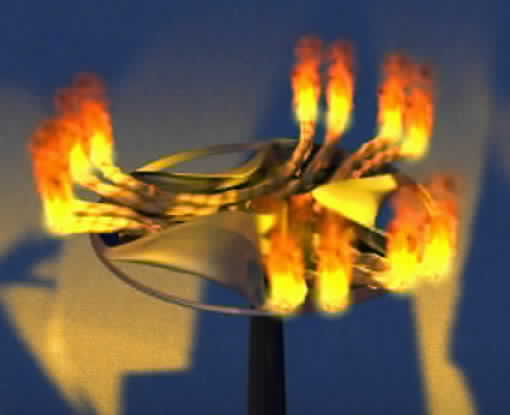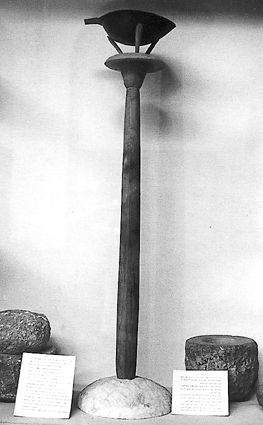[The following is a description of the possible function of the lobed schist bowl in the Cairo Museum that we discuss in G:TT Chapter 4, p. 222. It is extracted from John Reid's report of a tour to Egypt organised by the the Petrie Museum in March 2001, entitled In the Footsteps of Petrie. My thanks to John, Bill Kay and Dean Baker for allowing me to reproduce the relevant extract and photos here.]
One of the most unusual pieces is a strange circular object, fashioned in schist and with a central hub which gives it the appearance of having been designed to fit onto a pole. Bearing in mind that it is of pre-dynastic date, circa 3000 BC, it represents supreme ability in working hard stone, the "lobes" looking as though they had been bent over. Indeed, it is possible that it is a copy of an original copper artifact. One theorist who has attempted to explain its function is William Kay, an English engineer. He has suggested that it was actually a ritualistic tri-flamed oil lamp. A wick system comprising six bundles of rushes, bound together, were held in place by the lobes and thus kept immersed in the oil. If the ends of the four bundles were separated sufficiently, then twelve separate flames may have resulted instead of three. The numbers 3 and 12 are recognised as having symbolic significance for the ancient Egyptians. Bill Kay's concept seems entirely reasonable, especially in the light of a pole-supported oil lamp from Deir el Medina, also exhibited in the Cairo Museum.

Figure 1: The original lobed schist bowl in the Cairo Museum (photo copyright John Reid)

Figure 2: Reconstruction of the lobed schist bowl (copyright Dean Baker)

Figure 3: Bill Kay's hypothetical "Temple Lamp" (copyright Bill Kay and Dean Baker)

Figure 4: Oil lamp from Deir el Medina in the Cairo Museum (photo copyright John Reid)
[John Reid's full report is available from EGYPTNEWS: click on "files" and "footsteps"]
